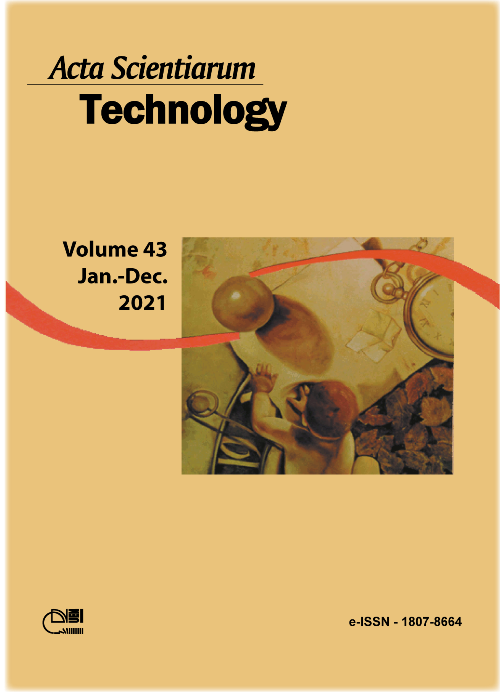Intraspecific discrimination of fish populations by fluorescence spectroscopy
DOI:
https://doi.org/10.4025/actascitechnol.v43i1.48395Keywords:
fluorescence spectroscopy; collagen fluorescence; Astyanax lacustris diet composition; fish scales; bioindicators.Abstract
This study used the visible fluorescence signal of scales from Astyanax lacustris fishes to differentiate ten populations of streams in Ivinhema River Basin, Upper Paraná Basin, Brazil. Scales were removed from the humeral region of each fish and the fluorescence spectroscopy was carried out with two excitation wavelengths: at 360 nm (UV-A) and 405 nm. The broad emission covers all visible regions and it is related to the organic fraction of scale, basically composed from type I collagen. By interpreting the experimental fluorescence spectra with multivariate statistical analysis, it was possible to discriminate the investigated populations. By exciting the inner face of scales at 405 nm, for instance, the obtained Wilk´s lambda was 0.143, and the ten sampled streams could be statistically differentiated with 85.2% of explanation. This fluorescence interpretation exhibits very good correlation with the diet composition, which was also investigated for the same fishes from which the scales were removed. The applied methodology was capable to analyze the scales of A. lacustris, and to provide meaningful and enlightening results for the differentiation of populations. This methodology is very important for aquatic environmental study, mainly because small fishes, non-migratory or with small migration rate, can exhibit differences among habitats, as response to genetic isolation and adjustment to local conditions.
Downloads
Downloads
Published
How to Cite
Issue
Section
License
DECLARATION OF ORIGINALITY AND COPYRIGHTS
I Declare that current article is original and has not been submitted for publication, in part or in whole, to any other national or international journal.
The copyrights belong exclusively to the authors. Published content is licensed under Creative Commons Attribution 4.0 (CC BY 4.0) guidelines, which allows sharing (copy and distribution of the material in any medium or format) and adaptation (remix, transform, and build upon the material) for any purpose, even commercially, under the terms of attribution.
Read this link for further information on how to use CC BY 4.0 properly.



















8.png)




